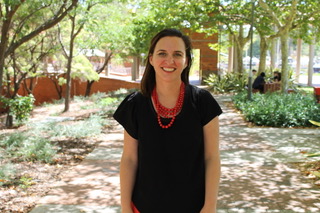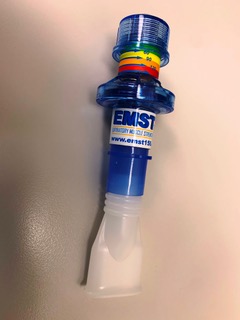
Many Parkinson’s patients are unable to swallow their saliva as fast as they make it, or close their lips firmly enough to prevent loss of saliva. The result is drooling – saliva drips out of their mouths.
While not a life-threatening condition, it can be embarrassing. Nearly three-quarters of Parkinson patients drool and consequently, many avoid social situations and become socially isolated.
Dr Naomi Cocks of Curtin University with colleagues from Parkinson’s Centre for Health Science (ParkC), Curtin University, and Royal Perth Bentley Group, recently trialled a behavioural treatment called expiratory muscle strength training (EMST) to see if it could help people with Parkinson’s who drool.
“People with Parkinson’s produce the same amount of saliva as everyone else, but they can’t control their swallowing and are often not able to clear their air passageways by coughing,” she said.
Drooling is currently treated with Botox injections to the salivary glands. This reduces production of saliva but has unpleasant side effects including a dry mouth.
Expiratory muscle strength training (EMST) was first developed for high school band students to increase exhalation strength.
It involves people blowing into a device against resistance. It’s a bit like blowing into a large straw but instead of the breath passing freely through the straw, the air encounters resistance.

Previous studies have found EMST not only increases exhalation strength but also improves cough and swallow strength.
Dr Cocks and colleagues were interested to know whether EMST would also lead to reduced drooling. So they designed a study of 16 volunteers with Parkinson’s between the ages of 55 and 90, who had self-reported difficulties with drooling.
“This was an early stage trial. Swallowing, cough strength, lip strength and self-reported drooling were measured in all volunteers before and after EMST.”
“The training exercises three sets of muscles at once – breathing, coughing and swallowing muscles.”
Trial participants completed an average of 30 sessions of EMST over a six-week period. This included two sessions with a speech pathologist and three sessions at home alone.
After training, their swallowing ability, cough strength, lip strength and drooling were again measured.
“We found swallowing ability, cough strength and drooling all improved significantly. One of the potential benefits of this is that a single treatment could treat three difficulties common in Parkinson’s – drooling, swallowing and cough strength – all at the same time.”
People with Parkinson’s often have difficulties with swallowing and a weak cough which can result in food and drink getting into the lungs, leading to risk of choking or inhalation pneumonia. So not only could this treatment potentially reduce drooling, but also reduce the risk of serious illness and hospitalisation.
No adverse effects were reported and participants gave high satisfaction ratings for the training.
“We are seeking funds for a large scale study with a control group,” said Dr Cocks.
“This study is an important first step. The results indicate that EMST results in a reduction of drooling probably due to improvements in swallow function.
“People with Parkinson’s concerned about drooling problems should wait and see the results of a larger study in case there are unexpected side effects.” she said.
Parkinson’s disease is the second most common neurodegenerative condition in Australia after dementia. It’s estimated around 70,000 Australians live with the condition.
The study was published in the journal Dysphagia, in January this year.
April is Parkinson’s Awareness month.































